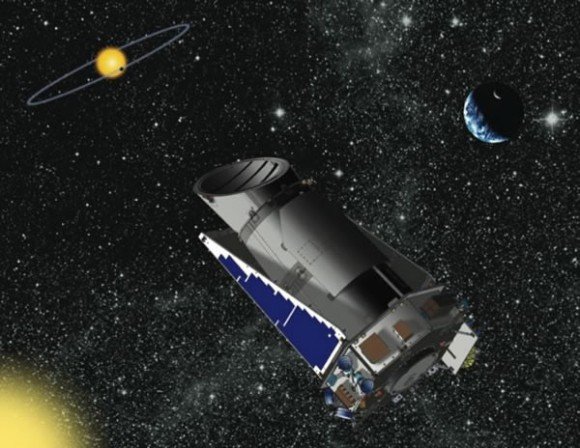How frequently do Earth-like, habitable planets occur in the vicinity of stars similar to the Sun?
News from the Kepler mission has once again emerged, this time in the form of a research paper that presents a theory suggesting that Earth-like planets may be more abundant around class F, G, and K stars than initially anticipated.In the conventional stellar classification system, these types of stars bear similarities, to some extent, with our own Sun (which falls under the Class G category). Class F stars are hotter and brighter, while Class K stars are cooler and dimmer. Consequently, the habitable zones surrounding these stars differ. Certain habitable planets could potentially orbit their host star at a distance twice that of Earth’s orbit around our Sun, or even closer in the case of a faint star, possibly within the orbit of Mercury.
So, how does this recent research demonstrate that small, rocky worlds may be more prevalent than previously believed?
Dr. Wesley Traub, the Chief Scientist of NASA’s Exoplanet Exploration Program, presents his theory in a recent paper submitted to the Astrophysical Journal.Drawing upon his calculations outlined in the paper, Traub posits that approximately one-third of class F, G, and K stars are likely to possess at least one terrestrial planet within their habitable zone. These assertions are based on data collected during the initial 136 days of the Kepler mission.

Initially, Traub began with a total of 1,235 exoplanet candidates. However, after careful consideration, he narrowed down the list to 159 exoplanets orbiting F class stars, 475 orbiting G class stars, and 325 orbiting K class stars. This resulted in a total of 959 exoplanets in Traub’s model. In his model, Traub defines terrestrial planets as those with a radius ranging from half to twice that of Earth. The mass ranges specified in the model range from one-tenth Earth’s mass to ten times Earth’s mass, encompassing objects ranging from Mars-sized to the theoretical super-Earth class.
The paper outlines three distinct ranges for the habitable zone. These include a “wide” habitable zone (HZ) spanning from 0.72 to 2.00 AU, a more restrictive HZ from 0.80 to 1.80 AU, and a narrow/conservative HZ from 0.95 to 1.67 AU.
After conducting the necessary calculations for his model and developing a “power law” that determines the habitable zone based on a star’s class, Traub estimated that the frequency of terrestrial, habitable-zone planets around Sun-like stars (Classes F, G, and K) is approximately 34 ± 14%.
Furthermore, Traub noted that mid-size terrestrial planets are equally likely to be found around both faint and bright stars, despite fewer small planets being detected around faint stars. This discrepancy is likely due to the limitations of our current technology, as small planets are more challenging for Kepler to detect, while planets that orbit closer to their stars are easier to observe.
Traub also discussed the quoted uncertainty, emphasizing that it represents the formal error in projecting the numbers of short-period planets. The true uncertainty will remain unknown until Kepler observations of orbital periods in the 1,000-day range become available.
This article is republished from PhysORG under a Creative Commons license. Read the original article.
Do not forget to share your opinion with us to provide you with the best posts !



0 Comments